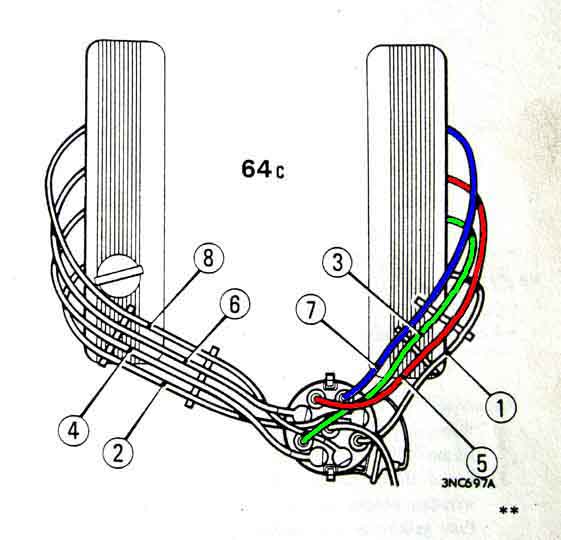
At first sight appears to have a single-strand resistive inner trapped under the crimped connector ...
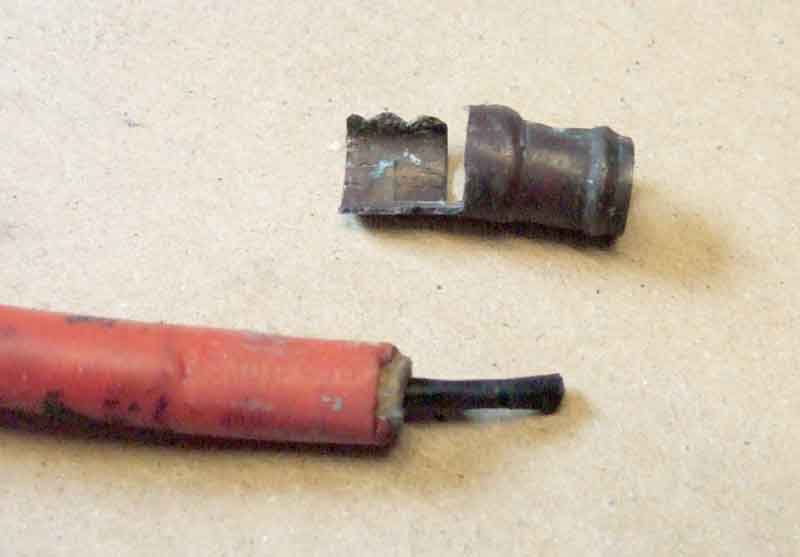
... but cutting diagonally through the cable shows it as many very fine strands which seem to have an outer coat bonding them into a single conductor. Each strand is conductive.
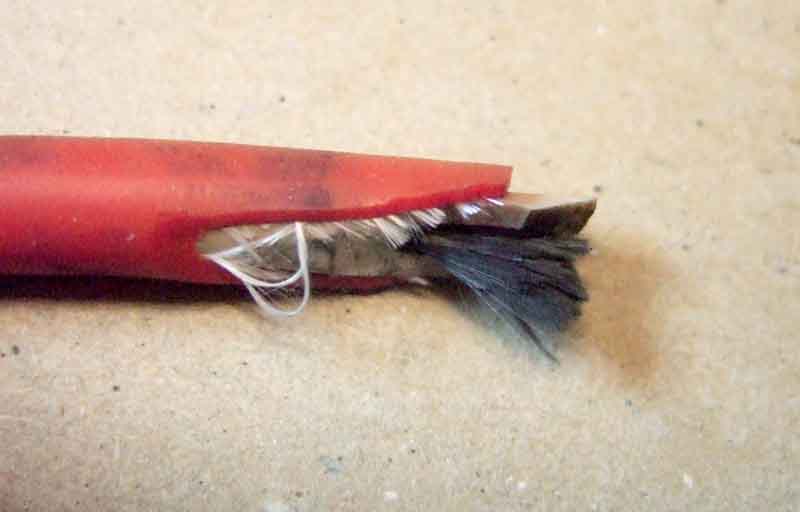
Construction
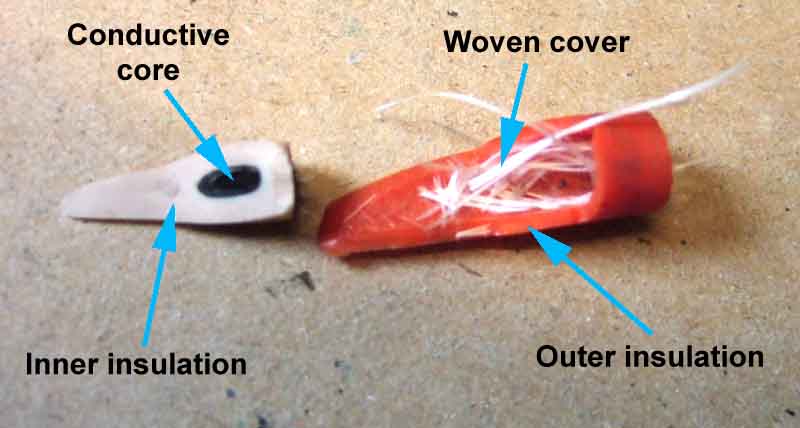
After that the sky is the limit as far as construction, claims and price are concerned. There are many that have a spiral wound steel conductor, which may have the central core as merely a strengthening device, or may be an additional resistive conductor such as in the basic silicone leads above. There is even one (at least) with 'capacitors' and braided earthing straps.

Magnecor have published an interesting document 'The Truth About Ignition Wire Conductors' that is very scathing about the claims made by many of these 'high-performance' aka highly priced leads. It includes the following statements:
- In effect, (when new) a coated "low-resistance" spiral conductor's true performance is identical to that of a high-resistance carbon conductor.
- ... a test performed by Circle Track Magazine (see May, 1996 issue) in the USA, show that NO "low-resistance" ignition wires for which a horsepower increase is claimed do in fact increase horsepower - the test also included comparisons with solid metal and carbon conductor ignition wires.
- Claims by Nology of their "HotWires" creating sparks that are "300 times more powerful," reaching temperatures of "100,000 to 150,000 degrees F" (more than enough to melt spark plug electrodes), spark durations of "4 billionths of a second" (spark duration is controlled by the ignition system itself) and currents of "1,000 amperes" magically evolving in "capacitors" allegedly "built-in" to the ignition wires are as ridiculous as the data and the depiction of sparks in photographs used in advertising material and the price asked for these wires!
- Unless you are prepared to accept poorly suppressed ignition wires that fail sooner than any other type of ignition wires and stretch your ignition system to the limit, and have an engine with no electronic management system and/or exhaust emission controls, it's best not to be influenced by the exaggerated claims, and some vested-interest journalists', resellers' and installers' perception an engine has more power after Nology wires are fitted. Often, after replacing deteriorated wires, any new ignition wires make an engine run better. (My emphasis as that goes for anything on an MGB)
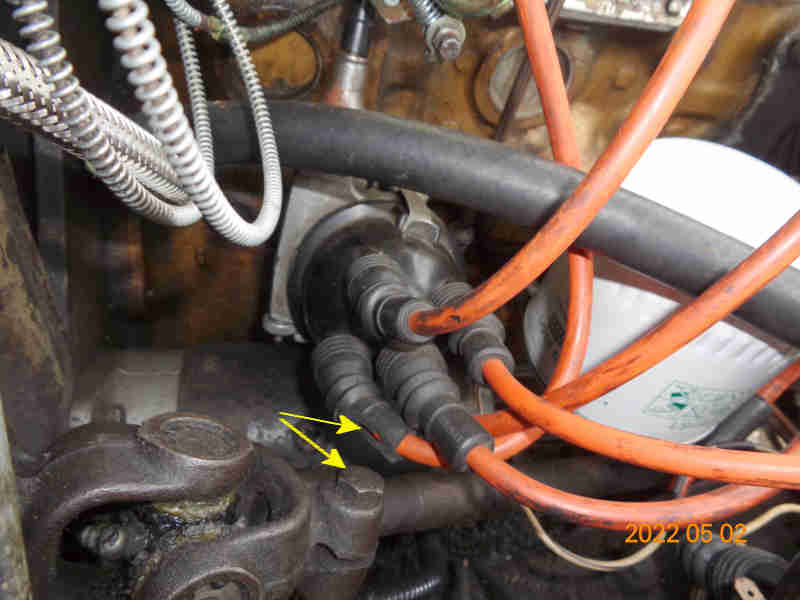
However there are lead sets with right-angled cap connectors (GHT106 for 25D4 and GHT184 for 45D4) that should solve the problem and are only £14 and £19 respective, I don't know how they differ.
Angled connectors fitted to the MGOC right-bank silicone leads for the V8:
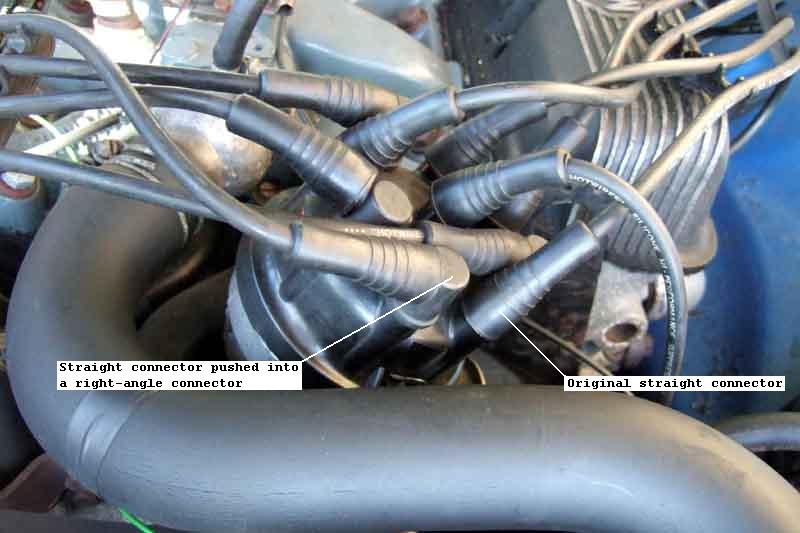
Separate leads 5 and 7 in the combs with lead 3 to prevent possibly parasitic ignition in cylinder 7 when 5 fires. Note the Leyland Workshop Manual Supplement states the direction of rotation incorrectly but the drawing of the firing order is correct: (image from Leyland MGB GT V8 Workshop Manual Supplement)
